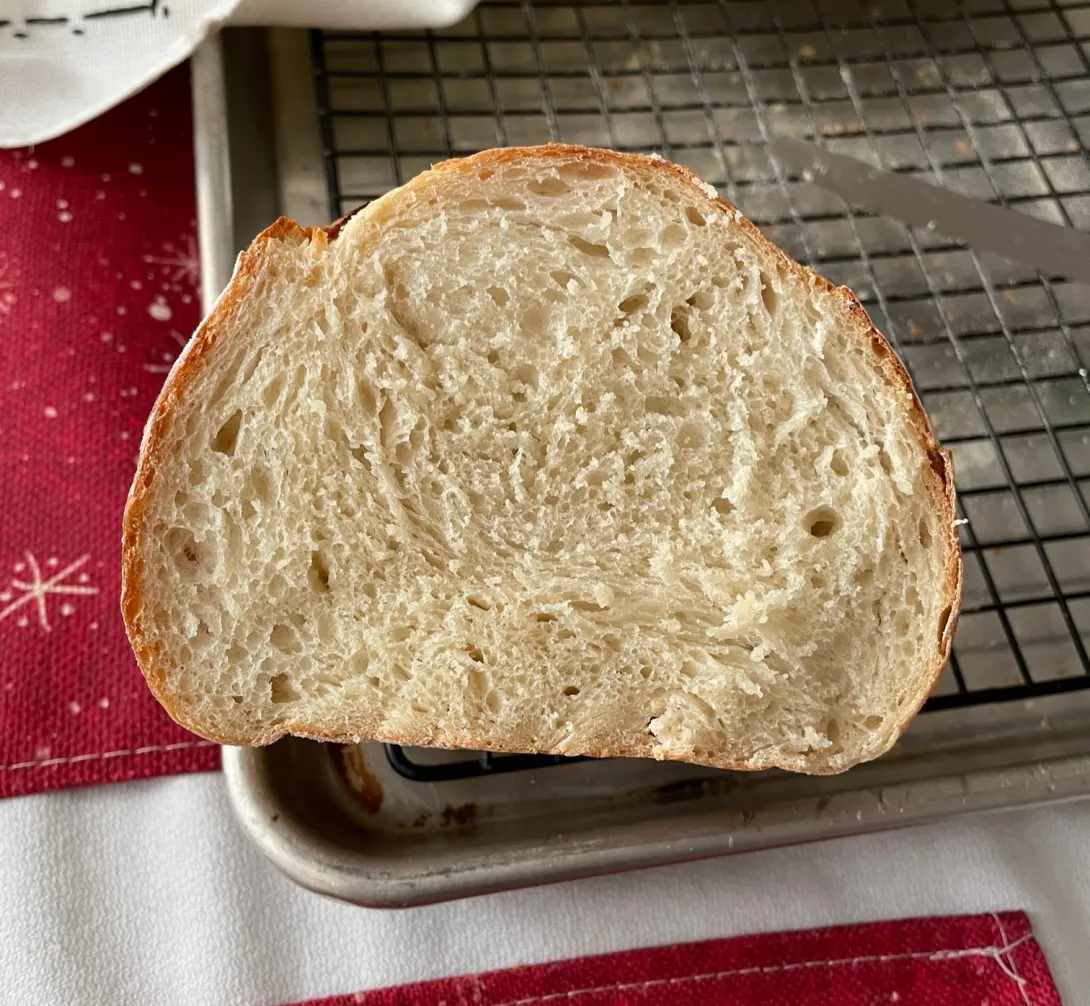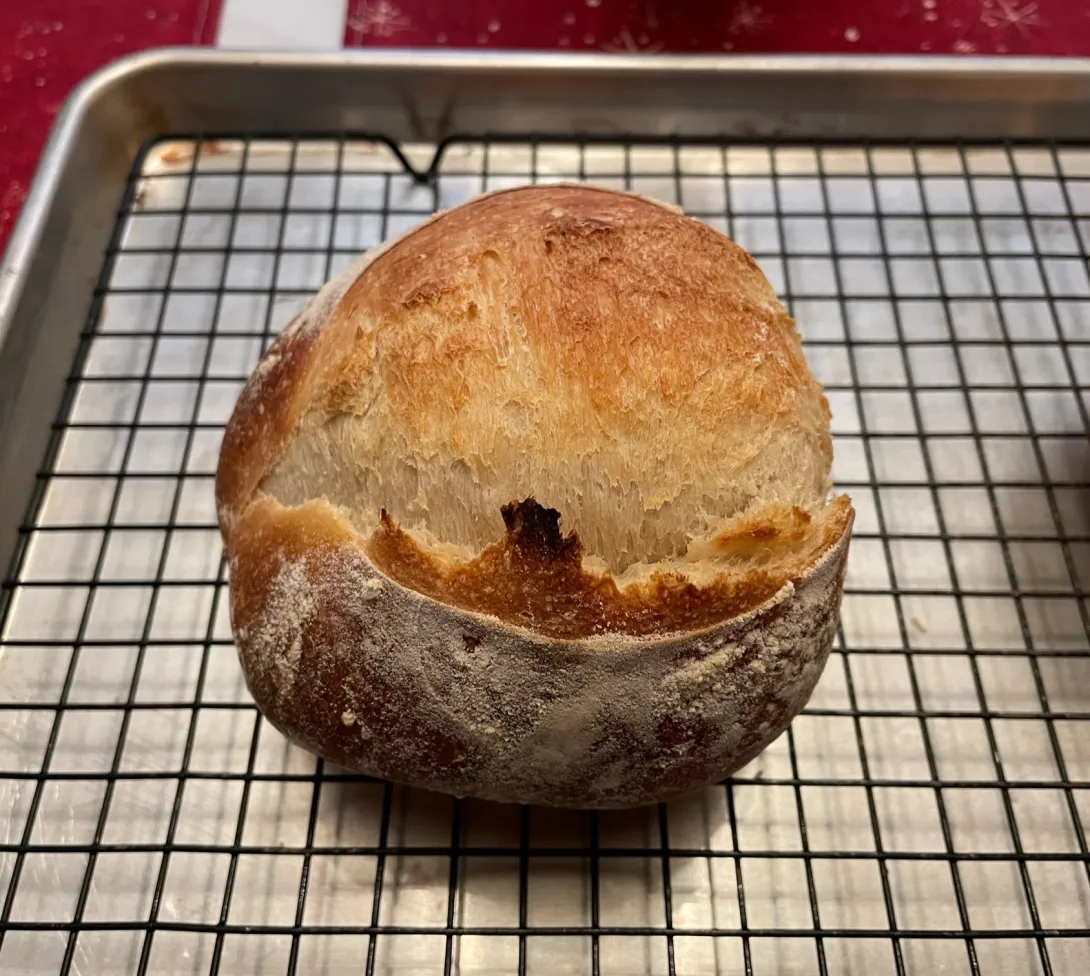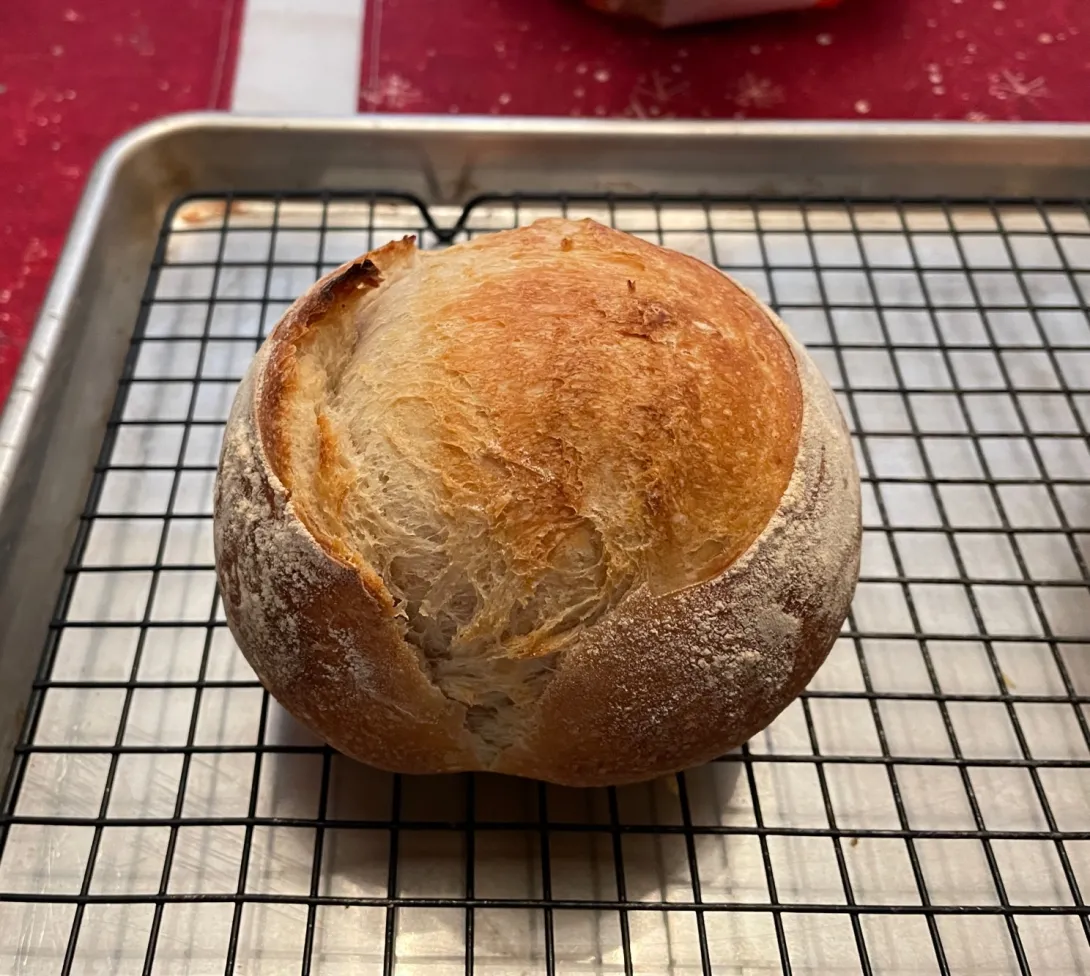I am wondering if my issue is in my "lazy" dough preparation or in my shaping. This was 500g of flour 75% hydration 885 grams total weight. This was a 400 g piece.
To prep I just mix all the ingredients (water, salt, yeast, flour) let it sit for 30 minutes and do 2 S&F at 30 min intervals. I then let it sit until it probably doubles and stick in the fridge and leave at least overnight. Next day I take what I want, let it sit for 20-30 minutes then shape and let rise.
I shape by (don't know what it is called) pulling dough towards me 1-2 times with quarter turns.
What I want is a bigger bread more volume, bigger holes so, it can "feel" like I am eating more of it.
What can be done or is this standard for the amount of dough?
This is what it looks like:



The oven spring on your loaf is impressive. No issues there. I suspect a softer hand shaping may yield a more open crumb.
Hi Logan! There is no standard for the volume of 400g of dough after baking. It can be tight and tiny or huge and airy, it is up to you.
One issue is the 'lazy' approach, i.e. no gluten development by kneading. More kneading equals larger volume. You have probably seen panettones before and after baking, they rise at least 8x in volume during proof and baking due to great gluten development. It obviously has nothing to do with sugar or fat in it. Plain bread dough rises 8fold as well.
You can see it in this picture, for example. The bottom portion of the loaf with 'large holes' in the bottom portion of the side crust shows where the top of the raw dough was and how it rose after proofing and baking (smooth portion of the side crust and the portion outside the tin):
Another issue is that you don't know what your wheat flour is capable of with that amount of water and yeast, because you didn't let it rise to the max volume during bulk fermentation. This will show you how big it can get. Just take a small piece of it and let it rise to the max in a measuring cup to see what gives.
For example: 100g flour 70g water, a piece of dough rises 8 fold
I find that every time I did an overnight cold retard, I would get less oven expansion, so all of my doughs would be baked on the same day at a younger stage nowadays. It is hard to tell from the pics but it looks to me like it did open up nicely for this loaf.